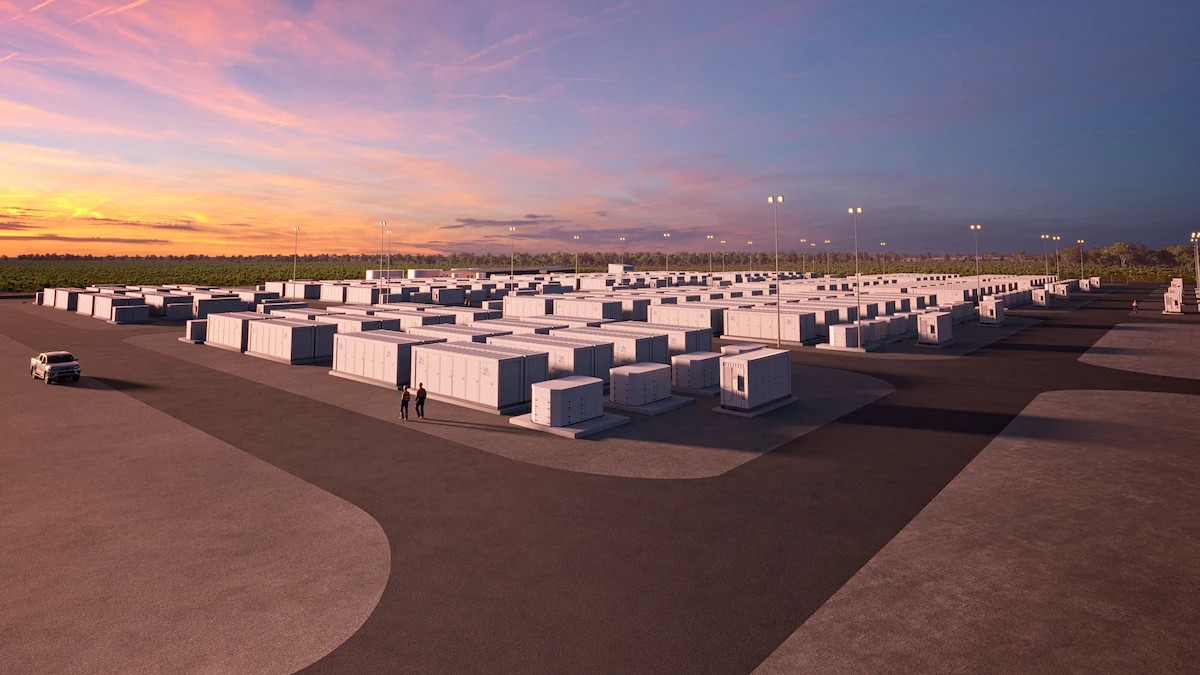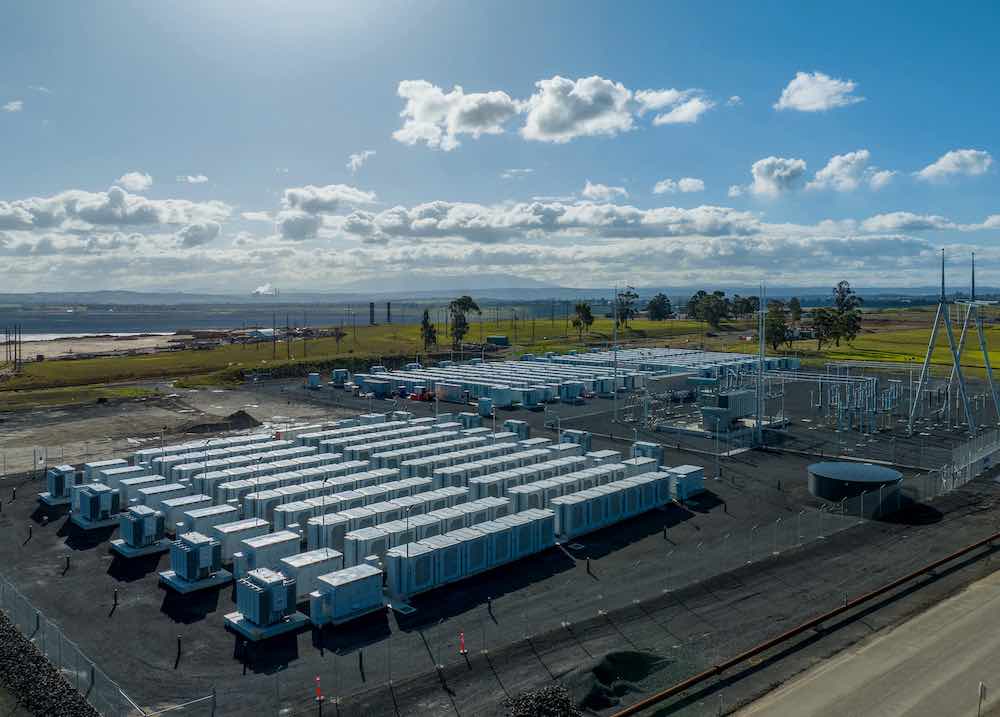Support CleanTechnica’s work through a Substack subscription or on Stripe.
Recently, CleanTechnica published an update on Australia’s progress in transitioning to a grid fully powered by renewables. Batteries are an integral part of that to store and time shift Australia’s abundant solar resources. Here are some more good news stories from Down Under.
Despite attempts by the newly elected conservative government in Queensland to slow the renewable energy transition, some renewable projects are still going ahead. One of these is the new 8-hour duration battery at the Stanwell Power Station site in Central Queensland. Stanwell, owned by the state government, has signed a memorandum of understanding with global investment firm Quinbrook. It is expected that the battery will support Queensland’s energy reliability and economic growth.
CATL (Contemporary Amperex Technology Co., Limited) will supply the long duration EnerQB BESS technology. The EnerQB is purpose built for 8 hours of energy storage and will be installed at Stanwell’s Energy Precinct adjacent to the power station.
“This is an opportunity to demonstrate a new long duration 8-hour battery that could innovate how we power both industry and communities,” Stanwell CEO Michael O’Rourke said of the 12-month trial. Performance, scalability, and commercial potential will be tested.
“The system can absorb and store an entire day’s worth of solar generation when prices are low and then deliver a continuous eight-hour supply during peak demand. It offers consistent, cost-effective energy without the need to stack or sequence multiple units,” he added.
“Deploying what we understand to be the world’s first true 8-hour battery storage solution will help strengthen energy reliability and put downward pressure on power prices for all Queenslanders,” Quinbrook CEO Brian Restall said. “We believe that Quinbrook’s unique combination of long duration, 8-hour batteries combined with the ultra-long backup of open cycle gas turbines marks a game changing moment for Queensland’s energy transition.”
Despite the inclusion of gas turbines in the mix, this is an important step forward for Queensland.
Staying in Queensland, AGL is seeking federal approval for a 500 MW/2 GWh battery in the sun-soaked Darling Downs, south of Chinchilla. As the coal mines in the area finish up, it is a smart move to use the infrastructure already in place to transmit power down to Brisbane a few hours drive away. Once completed, this battery would be the largest in the state of Queensland.
The Tuckeroo battery project already has council approval but also requires federal government approval because it involves matters of “national environmental significance.” Let’s hope the conservative state government doesn’t stick a spoke in the bicycle wheel of progress. We have three levels of government — council, state, and federal. All being well, work should start by 2027 and support the grid for at least 22 years.
“If approved, the project will consist of approximately 560 lithium iron phosphate battery packs, transformers, inverters, substation infrastructure and other auxiliary equipment. It is planned to be built on a 325ha site at 16 Mile Hall Road, Hopeland.” Hopeland already hosts coal mines and gas extraction. The battery will be easily connected to the nearby Powerlink Western Downs Substation via underground transmission lines.

“The Tuckeroo Battery Connection Project has been designed having regard to ecological desktop and field surveys and the application of avoidance, minimisation and mitigation principles,’’ the application reads.
While we are in the area, the Toowoomba Minute reports that progress is expected to made soon on the first stage of the 775 MW Bulli Creek solar farm project, about 125 km from Toowoomba. The solar farm is expected to deploy up to 1.5 million bifacial panels. Construction is expected to start next year, creating 800 new jobs. Toowoomba Regional Council has already approved the building of an accommodation precinct.
This is the beginning of the planned 2 GW Clean Energy Park. “It is proposed the initial solar farm stage would be followed by a battery energy storage system of up to 600 MW / 2,400 MWh capacity.”
Let’s take a step back in time and take a look at the first big battery (by the standards of the day) to be built in Victoria’s La Trobe Valley. Engie’s 150 MW, 150 MWh Hazelwood battery was built at the site of a decommissioned brown coal generator. “This is the first big battery to be built on a rehabilitated coal mine in Australia, super powerful stuff!” Enjoy the video from a visit by the Climate Council.
Now, the state government has announced it is fast tracking approval for its expansion as well as large solar-battery hybrid projects in the state. Approvals include “the Meadow Creek solar farm, near Wangaratta, which will combine a 332 MW solar facility with a 250 MW, 1,000 MWh battery and a 300 MW, 1,200 MWh Tramway Roads battery owned by Eku Energy.”
Meadow Creek will be built by US-based Energy Vault, initially famous for its gravity-based batteries. Meadow Creek says it spent two years in consultations with the local community, including the traditional owners, the Taungurung people.

“We’re also committed to delivering direct benefits to the nearest community, including reinvesting a portion of the project’s returns locally,” said Cameron Munro, the development director of the Meadow Creek solar farm.
Eku Energy says that, subject to ongoing grid connection and procurement activities, construction of the Tramway Road BESS could commence by late 2026, with operations commencing in 2028.
These new projects will join Victoria’s fleet of big batteries. The state boasts: “Victoria is the home of big batteries with 12 large scale energy storage systems with a total output capacity of 1028 MW in operation — that’s more than any other state.”
Victoria has legislated storage targets: of at least 2.6 GW of energy storage capacity by 2030 and at least 6.3 GW by 2035. The state sees energy storage as central to a stable transition to renewable electricity generation.
In September, Victoria’s Minister for Energy and Resources Lily D’Ambrosio officially opened another addition to the fleet — the 100 MW Latrobe Valley (BESS). The battery was developed and operated by Tilt Renewables, the largest owner of wind and solar generation in Australia. The expectation is that these projects in Victoria will help cut energy bills and keep the grid running smoothly, ensuring safe and reliable electricity for homes and businesses.
David Leitch of RenewEconomy comments: “Big batteries are scaling up, but we ain’t seen nothing yet when it comes to capacity and price impact.” Australia’s future is bright, electric, and energy rich.
Sign up for CleanTechnica’s Weekly Substack for Zach and Scott’s in-depth analyses and high level summaries, sign up for our daily newsletter, and follow us on Google News!
Have a tip for CleanTechnica? Want to advertise? Want to suggest a guest for our CleanTech Talk podcast? Contact us here.
Sign up for our daily newsletter for 15 new cleantech stories a day. Or sign up for our weekly one on top stories of the week if daily is too frequent.
CleanTechnica uses affiliate links. See our policy here.
CleanTechnica’s Comment Policy




